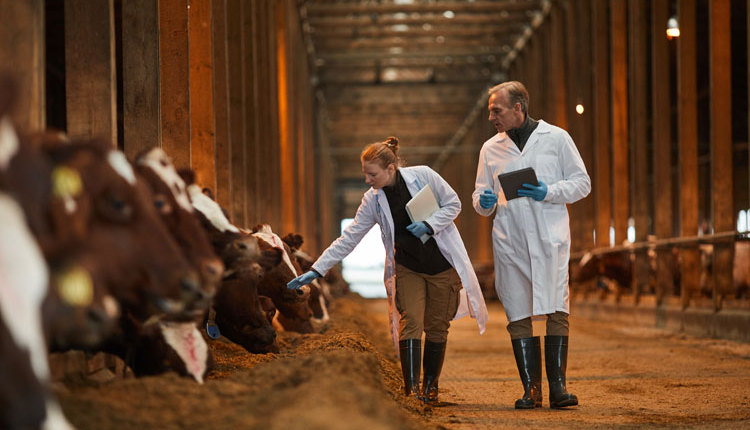The author is a partner and large animal veterinarian at Thumb Veterinary Services in Deckerville, Mich.

"Goodness, she’s biting them right off!” This statement about ischemic teat necrosis (ITN) was written by Ben Barber, a veterinarian from the United Kingdom, in a recent newsletter to their clients. Over the last 12 to 18 months, I, too, have witnessed this condition on a large Jersey farm in our practice. In my 40-plus years in dairy practice, I have seen an occasional case of nervous ketosis in which the self-mutilation caused from licking and chewing resulted in the loss of a teat, but there is nothing as perplexing as this disease. ITN is a frustrating and costly disease, as many of these animals soon are culled from the herd. I will briefly describe what we know — and don’t know — about this condition. Hopefully, we will initiate attention in this country to advance understanding and prevention.
History and clinical signs
Most of the animals affected in the herd are first-calf heifers, typically early in lactation. We have observed teat lesions and irritation beginning within a few days postcalving. Others develop erosive skin pathology leading to further invasive damage and self-mutilation in the subsequent two to three weeks. Many of us have had experience with bovine herpes mamillitis (BHM), in which the viral disease causes vesicles (pox) that rapidly erode the teat skin, leading to a progression of skin damage which advances over the affected teat. ITN is different, as it typically affects the medial aspect of the front teats, usually around the base of the teat, not the teat end. Perhaps the fresh heifer can more easily reach the front teats than the hind quarters, or her chewing/licking causes further trauma from the incisor teeth on the lower jaw.
Regardless, this is the most commonly affected area. Although the prevalence within a herd is fairly low, the consequences are disheartening. Also worth noting is that typically only one or two teats are involved. Severity of skin or tissue damage is variable, from small areas of discoloring and inflammation to crusty areas appearing near the teat and udder junction. The most severe cases appear to be highly inflamed, pruritic (itchy), and result in self-mutilation.
Causes and prevention?
At this point, we do not have the etiology of this disease well understood. A diverse collection of opportunistic bacteria have been isolated with various microbiological methods of detection. The role of treponemes (digital dermatitis) and orthopoxvirus have been excluded from having a major role in this disease. Our discussions have highlighted the importance of healthy skin in providing protection against a host of secondary invasive pathogens. Other agents worth investigating include ectoparasites (mange, mites, and lice), dermatophilus (rain rot, strawberry foot rot), and udder cleft dermatitis (udder rot).
At this point, many questions become apparent. Are Jerseys more susceptible? If so, why? Are allergies involved? Elevated white blood cells called eosinophils are a feature in the diseased tissue, commonly seen with allergic conditions.
Is bedding type and moisture a cause? The herd, in this case, is well managed with beds of virgin sand.
Healthy teat and udder skin is the goal as well as management of excessive udder edema in heifers. Confirm that machine function is not creating issues with mouthpiece vacuum and teat skin trauma.
Unfortunately, ITN is now recognized in multiple regions as an emerging disease. Low prevalence within a herd is still troublesome due to the severity caused by self-mutilation and culling.
I would be interested in hearing your experience with ITN, or what you perceive as closely resembling this disease. My email is drmarkfox@thumbvets.com. Hopefully shared experiences can help us gain insight. Wishing you all the best as we enter our growing season.
Author’s note: After writing this article, we switched pre- and post-teat dip in our fresh pen from 0.5% iodine to chlorohexidine with emollient. It appears to be working. Though not eliminated, we are seeing fewer cases.











